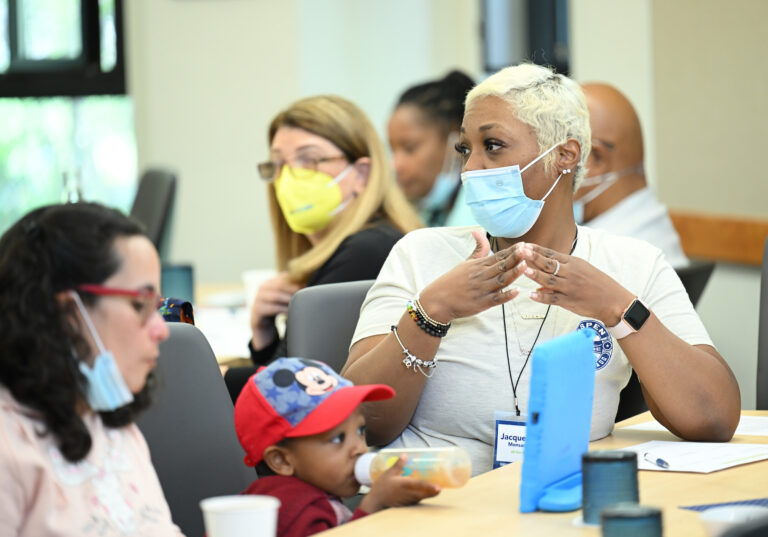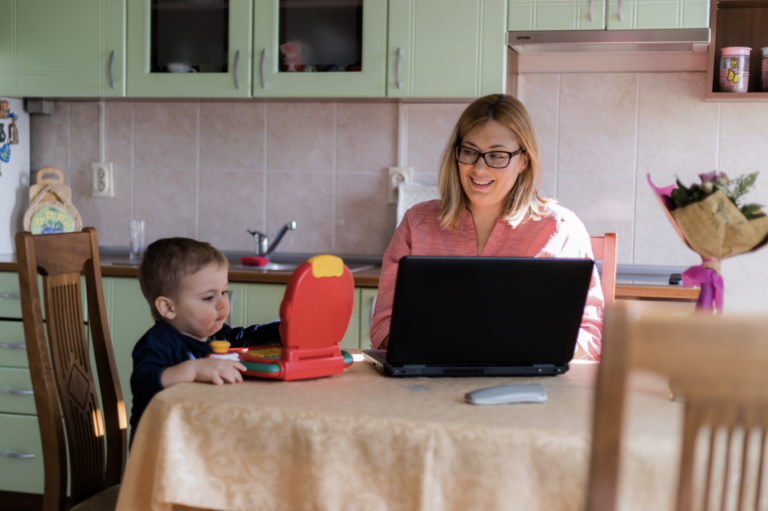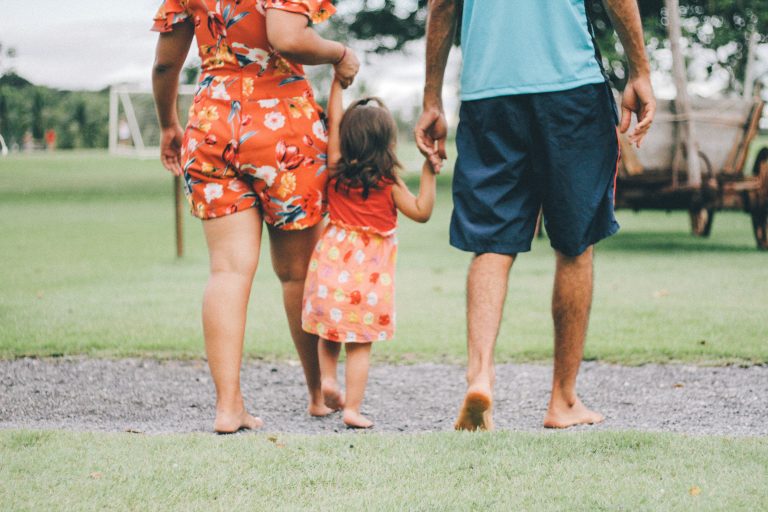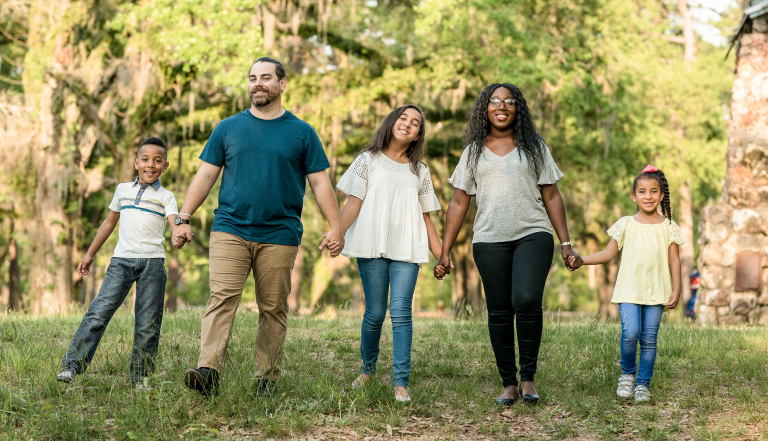Family Prosperity: 10 Minutes with a Leading Early Childhood Researcher on Home-Based Care and Opportunities Ahead
Earlier this year, Ascend launched the Aspen Family Prosperity Innovation Community, our initiative for breakthrough innovations and collaborations that position families to reach educational success, economic prosperity, health and well-being. As we look toward 2021, opportunities and challenges abound for work-family supportive policies – namely, the future of child care. More than ever, families are struggling to ensure young children have affordable, quality, safe early learning environments; as the Biden-Harris Administration transitions into office, we also recognize that investments in new robust systems of care are a possibility. We asked Gina Adams, a national expert in child care and early learning and a key partner in Phase I of Family Prosperity through Urban Institute, to share insights into the current landscape and how we might maximize those opportunities.
Ascend: Thanks so much for chatting with us. Let’s start with a basic but often misunderstood term. Can you explain to us the different terms associated with “family friend and neighbor” care? We often use different terms thinking we are describing one form of child care, but in fact may be conflating different programs. The more precise we can be, the better we can advocate for resources.
Gina Adams: “Home-based child care” is a term that is being used increasingly these days – and it tends to refer to anyone who is not a parent or guardian who is taking care of children in a home-based setting … whether it is the child’s home or the home of the caregiver, and regardless of whether the care is by someone who has a relationship with the family (such as a family member or friend).
“Family child care” is another term that folks use a lot – and it means different things to different people. For example, some people use the term “family child care” to describe any setting where a provider is paid to care for children who are not related to her, in her own home. Other people use the term “family child care” to just refer to the subset of those providers who are licensed.
The extent to which these two definitions overlap really depends on the state you are in. State licensing rules vary widely in the threshold of how many kids someone can care for in their home without having to be licensed.
I found a useful table from 2014 from the National Center for Early Childhood Quality Assurance that shows only 10 states required a home to be licensed as soon as someone cares for even one unrelated child in their home, most states set their thresholds at three, four, or five, and some go higher. In South Dakota, you can care for up to 12 kids in your home without having to be licensed.
The licensing system is one of the main ways we have to even know if a provider exists or anything about the care they provide. In the 10 states that license homes as soon as they care for one kid who is not their own, it means that the state knows something about and has the ability to establish basic health and safety practices for all of the family child care providers in their state. In states that only require a home to be licensed once they care for larger numbers of children, a very significant part of the home-based child care world is invisible to the state and very hard to affect through policy or regulation. Of course, smaller programs that don’t have to be licensed can choose to be licensed, but they don’t have to.
When someone talks about family child care, make sure to find out if they are talking about anyone who is taking care of a group of kids who are not related to them in their home or just the subset of that group that is licensed. When you think about policies that you are trying to put in place for the home-based sector, be aware of the wide differences across states in the likelihood that a home-based provider will be identified and part of any kind of public system such as licensing. Public efforts focusing on licensed family child care will cover a very different proportion of the family child care market in one of those states that require everyone to be licensed than it will in other states. The proportion that is covered will go steadily down as the licensing threshold for the number of kids that will trigger licensing requirements gets higher.
There is a similar amount of confusion and imprecise language when we talk about “family friend and neighbor care (FFN),” which is sometimes also referred to as “informal care” or “license exempt care.” However, these are not all the same thing. The term FFN usually refers to a situation where someone asks a relative, friend, or neighbor to care for their children. However, this is not always exempt from licensing. Again, in a state that requires someone to be licensed if they care for even one child who is not related to them in their own home, a friend or neighbor caregiver would be considered a licensed family child care provider. Relatives are usually not required to be licensed. Therefore, in states that set the family child care threshold at one, the only license exempt home-based care would be relative care. There would be no such thing as legally exempt friend or neighbor care.
Historically, we know that the majority of children have been cared for outside of traditional center-based care, but that those programs receive the least federal funding. Why is that? What can be done to address it?
When the first federal child care legislation passed in the late 1980’s, there was a strong provision supporting parental choice of the care that best met their needs including, for the first time, relatives and legally unregulated caregivers. The federal law required states to have at least some minimal health and safety protections in place for these providers – except for some relatives. States varied widely in the extent to which these providers were subsidized and in the extent to which they established and enforced health and safety protections for them as a condition of letting them get subsidy funding. Some states had relatively few kids receiving subsidies receiving legally unregulated care and some had the majority.
However, in recent decades, there has been a rising focus on ensuring the quality of care that children receive. This is fed by the rising awareness of the brain development opportunities for young children. Yet, the research on child care quality and the definitions of quality care were often dominated by center-based care. This is so, at least in part, because they are easier to identify and easier to study, they serve more children so are more cost-effective to assess, and [they] are easier to target for policy strategies. It is also much harder and costly to assess the quality of home-based settings and to enforce health and safety requirements in home-based settings. If you think about it, a licensing inspector can use their time over the course of a week to inspect a certain number of child care centers, each of which serves 50 to 150 kids or can inspect the same number of home-based settings, each of which serves maybe three to seven kids. With scarce resources, it is understandable that the focus has become on centers, though it is short-sighted as there are as many children cared for in home-based settings.
Even though research suggests that the full-range of quality can be found in any setting, and that home-based settings can be just as high quality, there is a common perception that home-based care is less likely to be high quality. This has led to something that I’ve been calling an ‘unconscious center bias’ in our field – where our policies, research, practices, training, and QRiS systems are often constructed on a basic set of beliefs and policies that are designed around center-based care. [This] then disadvantages home-based settings [that] are having to compete in the same markets and comply with regulations that may not make sense for them.
You can see how this plays out when you look at our public resources and where they are spent. Head Start and pre-kindergarten have always been much more commonly delivered through center-based models. Over the last 10 to 15 years, we see that the subsidy system in many states has significantly moved towards center-based care. Julia Henly and I recently wrote a paper focusing on this trend and highlighted that “over the past two decades, the proportion of children receiving CCDBG subsidies who are cared for in center-based child care programs has risen significantly — from 56 percent in 1998 to 73 percent in 2015 — with the trend becoming more pronounced after 2006. All but four states have reported increases in the use of center-based care since 1998. By 2015, center-based arrangements were used by the majority of children receiving child care subsidies in 43 states and by more than 90 percent in 10 states.“ We highlight that changes in the CCDF law in 2014 could significantly accelerate this trend.
Many of the most vulnerable families don’t have easy access to centers – as the center-based model may not work well for them. This includes children whose parents work non-traditional hours, infants and toddlers, children with special needs, and children living in rural areas. We have almost all of our public resources going to child care centers meaning that families who can’t use centers can’t access them.
The real problem here is that we simply don’t have enough funds in the system. I’m not trying to suggest that fewer resources should be directed to support families needing care in child care centers – as centers are a critically important part of the child care market and many families need them. I’m simply suggesting that we need to ensure that public resources need to be spent on the full range of child care providers that meet parent’s needs and support equitable access to public resources. We need to have a “both/and” conversation, rather than an “either or.”
What are the two biggest opportunities you see to improve equity in child care as a result of COVID-19?
First, the pandemic has shown everyone the critically important role that child care plays in helping parents work. The pendulum has swung between child care as a work support (1990’s) and child care as a child development support (last 15 years or so). [It] doesn’t seem be able to settle in a middle ground that keeps both the ‘care’ and ‘education’ functions as equally important. I’m very glad that the awareness of child care as a critical work support, and child development support seems to be publicly acknowledged. I’m hoping that this awareness allows us to try to get to that middle ground. We have to recognize that child care of all types is essential for our workforce and for children’s healthy development. We need to take a balanced approach to meet those needs simultaneously.
Second, families have always used home-based settings – and I believe always will for a lot of different reasons. But under the pandemic, parents appear to be seeking home-based settings more due to a variety of factors. Some parents want home-based settings because they trust the caregiver. [It] can limit the number of children their kids are exposed to, and [parents] don’t have to deal with public transportation. Other parents perhaps prefer center-based care but aren’t able to find it given the child care crisis created by the pandemic or [aren’t] able to afford it.
The pandemic provides us an opportunity to use this awareness and trend to advocate for more resources being made available to home-based settings to help meet the needs of parents seeking this form of care during the pandemic and beyond.
What is one fact about home-based child care that you wish policymakers were more aware of?
It is a form of care that meets the needs of millions of working American families with low-incomes – including many families whose circumstances are such that child care centers do not meet their needs or are not available. It is a good option that can support children’s healthy development in important ways. It deserves our proactive support and investment. It is not a second-best option but often can be the best option for parents and kids. This reality not only includes family child care, which is a critically important sector, but also family friend and neighbor providers who make up a significantly larger portion of the care market and are often overlooked. While I understand this is due to the complexity of that sector, we can’t support the needs of families and children if we don’t actively identify ways to support these caregivers as well.
What gives you hope right now?
The opportunities!
Gina Adams is senior fellow in the Center on Labor, Human Resources, and Population at the Urban Institute and directs the Urban Institute’s Low-Income Working Families and Kids in Context initiatives. You can find more on her work here.
Related Posts














